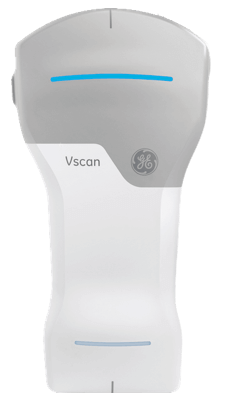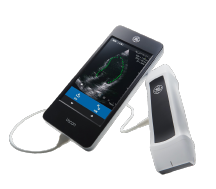
Value-based care might be a big focus in the industry, but reducing healthcare costs is still a major priority for leaders who are dealing with tight margins and fee-for-service contracts as well. Solutions such as handheld ultrasound have demonstrated cost-saving benefits for both patients and providers.
A Win for Both Hospitals and Patients
Hospitals are under increasing pressure to provide a balance of improved outcomes and cost efficiency for their care populations. These pressures have led effective administrators and leadership teams to seek out cost-effective solutions that don’t compromise on quality or the patient experience.
Handheld ultrasound is a pocket-sized device that empowers clinicians, including cardiologists, general practitioners, OB/GYNs, primary care providers, emergency physicians and intensivists to conduct focused imaging at the point of care. Patients are provided with an optimized diagnostic journey at a lower cost — a benefit that’s attractive as they take on a larger portion of the financial burden of care.
Reducing Healthcare Costs With Handheld Ultrasound
Handheld devices reduce costs, and it’s more than simply being less expensive than traditional ultrasound models.
Handheld ultrasound devices are so small that providers are able to keep them on hand at all times. This means that providers are ready to conduct a variety of short, focused exams when appropriate, including the following:
- Abdominal
- Cardiology
- Lung
- Obstetric
- Urology
- Vascular
This enables simpler workflows and enables patients to start on the path to treatment faster because they don’t need to wait for more comprehensive imaging modalities.
Lowering the Cost of Abdominal Paracentesis Procedures
According to the Journal of Medical Economics, “The use of ultrasound guidance in abdominal paracentesis procedures is associated with fewer [adverse events].” It has also been found to be associated with “lower hospitalization costs than other procedures where ultrasound is not used.”
Savings in Thoracentesis Procedures
Another study, published in the Journal of Clinical Ultrasound, noted that “[ultrasound-guided] thoracentesis is associated with lower total hospital stay costs.” It is also associated with a “lower incidence of pneumothorax and hemorrhage.”
Cost-Effective Transthoracic Echocardiographic Imaging
A study published in Clinical Cardiology demonstrated that “pocket-sized [portable transthoracic echocardiography] provides accurate detection of cardiac structural and functional abnormalities beyond the ECG.” What’s more, the study says “the use of [portable transthoracic echocardiography] as an initial screening tool prior to [standard transthoracic echocardiography] is cost-effective, suggesting that the pocket-sized [portable transthoracic echocardiography] is poised to alter the current diagnostic strategy in clinical practice.”
Moving Forward
Using a cost-effective ultrasound solution contributes to more efficient clinical processes and a better imaging experience for the patient. Options like handheld ultrasound should be a standard in implementing cost-focused best practices for forward-thinking healthcare organizations that prioritize increasing asset performance and reducing healthcare costs.




